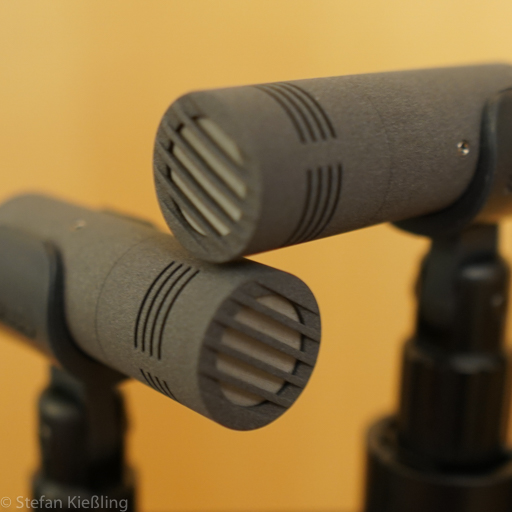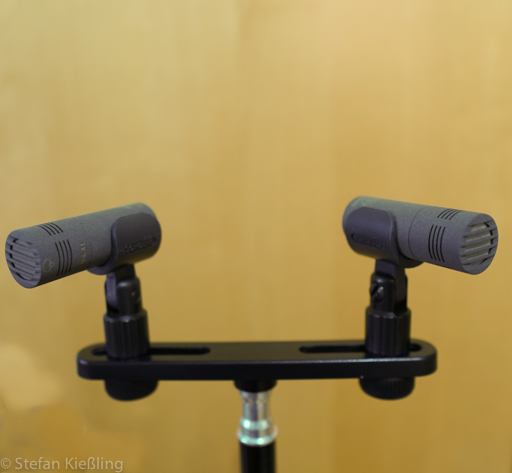The Combfilter Effect in Stereo-Setups
© by Stefan Kießling
Ideal coincident stereo microphone setups would place the two microphones exactly at the same place so that incoming sound waves arrive both membranes at the same time. In reality this is not possible. There is always a distance between the two microphones. A sound wave would arrive at the two membranes at different times, having travelled different distances. When the signals of the two microphones are mixed together this will result in a combfilter effect. The intensity of the effect depends on various things: distance of the microphones, polar pattern of the microphones, angle between them, angle of the incoming sound wave, mixing relation.
Spaced setups (AB, ORTF, NOS etc.) should be panned hard left/right to get the cleanest sound. Narrowing down the panning or even summing up the channels to mono will reduce the width of the stereo image, but immediately introduce a comb filter effect throughout the whole area.
There is no combfilter effect when
- an XY/AB-recording is played back in Stereo without narrowing/widening the stereo image in post.
- a MS-recording is summed up to mono.
XY
MS
AB
XY-Stereo (incl. Blumlein)
Vertical/horizonal arrangement: ?


Vertical or horizontal distance between the center of the microphones: ?
30mm
Angle between the microphones: ?
90°
Polar pattern of the microphones: ?
MS-Stereo

Vertical distance between the center of the microphones: ?
30mm
30mm
Polar pattern of the center microphone: ?
AB, ORTF, Faulkner etc.

Distance between the center of the microphones: ?
30cm
30cm
Angle between the microphones: ?
0°
Polar pattern of the microphones: ?
Stereo width: ?
0.5
Distance of the sound source: 500cm ?
Result
Resulting patterns:
Comb Filter Map : ?
Spectrum (hover the mouse over the comb filter map): ?
Equipment
Affiliate-Links
plastic clips to clip two microphone bodies together: Rycote MS Stereo Clip
Fig. of 8 microphone capsule for mid and side: Schoeps MK 8
Super cardioid microphone capsule: Schoeps MK 41
Microphone amplifier for the capsules: Schoeps CMC 1U
Ultra compact Microphone amplifier for the capsules: Schoeps CMC 1L
Field recorder, suitable for on-location recording, with 6 channels: Zoom F6
 Patron werden!
Patron werden!